#marryat family
Text
In the loose and eclectic collection of Captain Marryat's surviving correspondence that his daughter Florence assembled into The Life and Letters of Captain Frederick Marryat (published 1872), there are many letters addressed to his sister-in-law Caroline, wife of his brother Charles Marryat. They seem to have had a good relationship, and Caroline still had these letters almost 25 years after Marryat's death. (Florence laments in her introduction that her father's voluminous correspondence has been "mostly lost or destroyed".)
In September 1843, it appears that Caroline was in search of a donkey, prompting the following letter:
My dear Caroline,
It is a very difficult affair to get a good donkey and a large one. I do not know of one anywhere about here, except one in my own possession, who is of a large size, and very virtuous for a donkey, going well in harness and saddle, and very fast when he thinks proper. He has always been much petted, and with kindness will, I have no doubt, do well, especially if to fair words you add a few oats. It will further suit Charles's economy and my feelings if you will accept him from me; and of course you will call him Fred the Second. Am I to send him up by railway? If so, he must go to Norwich. What the expense will be I cannot tell, as I do not think that donkeys are enumerated among the passengers; but Charles can inquire in London, and when you write again let me know all about it. It will cost five shillings to get him to Norwich.
Love to gr. ma and others.
Ever yours,
F. MARRYAT
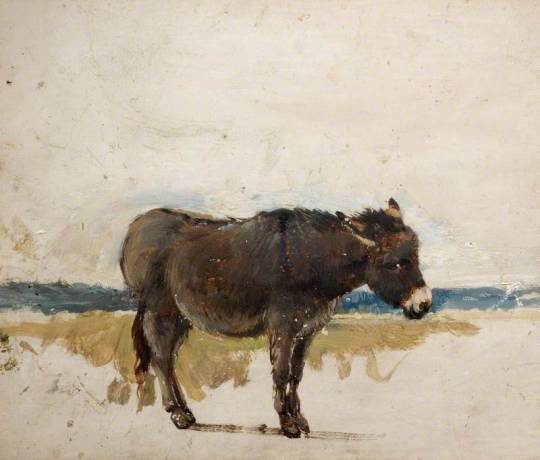
Study of a donkey, 1841-1843, by the artist David Cox the elder (Art UK). Could this unassuming fellow be Fred II? (Nice name suggestion by Marryat — making an ass of himself).
#frederick marryat#captain marryat#fred the second#life and letters#marryat family#florence marryat#1840s#biography
15 notes
·
View notes
Text
It’s Frederick Marryat’s birthday very soon (10 July 1792), and I’ve been thinking a lot about the effect he’s had on my life: and just what is the nature of my fascination with this man. I think a huge part of being interested in Marryat is being drawn to the man himself, not just his stories and travel writing. You have to have some kind of personal investment in this bitchy, lecherous, sarcastic, self-righteous, frequently infuriating and problematic man; you have to care about him on some level. He feels extremely present in his writing.
I think Virginia Woolf expressed it well when she wrote in her essay on Marryat, “The Captain’s Death Bed”:
Often in a shallow book, when we wake, we wake to nothing at all; but here when we wake, we wake to the presence of a personage—a retired naval officer with an active mind and a caustic tongue, who as he trundles his wife and family across the Continent in the year 1835 is forced to give expression to his opinions in a diary.
Sometimes I wonder about what Marryat would think of me as his reader. In response to criticism in Fraser’s Magazine, Marryat wrote a long letter defending his work in cheap weekly newspapers which would be read by the lower classes (reproduced in The Life and Letters of Captain Frederick Marryat, edited by his daughter Florence Marryat). He starts out strong, attacking elitist attitudes about literature, and then shows his ass with smug pronouncements about how he’s writing wholesome fare to educate the lower classes, unlike trashy weeklies filled with “immorality and crime” that also teach people to criticize the government or read Chartists! (Marryat was a complex person whose views can’t be pinned down with modern political labels, but he wasn’t very progressive, not even in his own time.)
Marryat was my introduction to the Napoleonic Wars and the War of 1812, which have become major interests, he was my first real exposure to Regency-period fashion and manners, and he has increased my general nautical knowledge a hundredfold. I feel a kinship with him across time and space as he offers his opinions on the world of the 1830s and 40s, a bit jaded in middle age but still keenly observant and very confident in his opinions.
#frederick marryat#captain marryat#shaun talks#he's one of those 'i wish i could study him in a jar' types (and i'd shake the jar too)#but i feel bad for him#this man was at war for a billion years starting from childhood#and it definitely messed him up#and he can be a genuinely good storyteller#complicated feelings for a complicated man#i will admit to liking marryat
33 notes
·
View notes
Photo

The Brown Lady of Raynham Hall
In 1936 Captain Hubert C. Provand was taking photos of the picturesque Raynham Hall, a country house in Norfolk, England, when he snapped this picture.
As Provand was setting up the shot, his assistant called out for the photo to be taken ‘now’, as something was descending the staircase. The result is this world famous ghost photo, said to be that of Lady Dorothy Walpole.
September 19, 1936: Photographer, Captain Hubert C Provand and his assistant, Indre Shira were taking pictures of Raynham Hall, Norfolk, England for the December issue of ‘Country Life’ Magazine.
Little did they know that on this day they would capture the ghost that has said to be haunting the old country house since the mid 1800’s.
The ghost is better known as the ‘Brown Lady’, as the spectre has been described as wearing a brown silk brocade dress.
It is believed that the Brown Lady is the spirit of Lady Dorothy Walpole, who died at Raynham Hall in 1726 from Smallpox, after a long incarceration within the houses walls.

Dorothy Walpole was the sister of Sir Robert Walpole, who was considered to be the first Prime Minister of Great Britain (serving 1721 to 1742 which would also make him the longest serving Prime Minister). Dorothy was Charles Townsend’s second wife, Charles having served as the secretary of state for ten years.
It is said that Dorothy had an affair with the 1st Duke of Wharton, Philip Wharton (yes all these upper class families make for quite complex reading and research), and her husband, Sir Walpole did not take too kindly to that, and had Dorothy locked in the upper floor rooms of their home – Raynham Hall.
Another story states that Dorothy was entrapped by the Countess of Wharton, never to leave the house… not even to see her children. It is said she returns to find, and finally be reunited with her children. A sad tale indeed!
Either way Lady Dorothy Walpole died of Smallpox 29th March 1726 aged forty.
The Brown Lady aka (possibly) Lady Dorothy Walpole has been seen on a number of occasions since her death, with the first recorded sighting being in 1835 after a Christmas party. Several guests had seen the ghost as they went up to their bedrooms for the evening, one describing it as having a glowing face but with empty eye sockets.
Captain Marryat (a gentleman who wrote novels set out at sea) retired to his room one night, and had remarked to two others he met on the way that he was carrying a gun as protection against the Brown Lady. It was at this point the apparition appeared and ‘diabolically’ grinned at the captain as she passed by him.
The captain took two shots, both passing straight through the apparition, to embed in the door and door frame beyond.

Many other people have witnessed the Brown Lady on the main staircase and in the bedrooms. Generally these sightings occur when heading to bed, or waking up in the middle of the night to find her standing in their rooms.
The ghost has also been seen right before tragic events and deaths that affect the Townsend Family. One evening, during a dinner party, many guests had seen the apparition, complete with her brown dress, walking through the crowd. The Spectre did not seem to recognize anyone and soon disappeared. The next morning, news of the death of George Walpole reached the group at the estate, George had died at about the same time the Brown Lady has been seen.
On the fateful day the photo was taken, Captain Hubert C Provand and his assistant Indre Shira had set up the camera at the foot of the main staircase, with Provand under the protective cloth at the back of the camera. They had already taken one photo and Provand was re framing for another shot. Shira suddenly called out to Provand to take another shot and at this Provand removed the lens cover and made the exposure.
Shira had seen the figure of a lady descend the staircase when he called for the photo to be taken. Upon development, the image did indeed show a spectral figure on the staircase; The Brown Lady had been captured at last!
The picture was published in Country Life magazine December 16th 1936, along with the accounts of Provand and Shira.
Renowned paranormal investigator Harry Price interviewed the two men and stated he could not find a flaw in their story, as the negative also showed the figure. With the exception of the two men lying, he could not see how the image could be anything but that of the ghost in question.
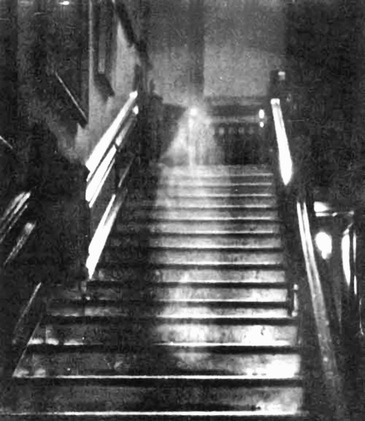
#The Brown Lady of Raynham Hall#the brown lady#Raynham Hall#Haunted Location#paranormal#ghost photo#ghost#hauntings#spirits#ghost and hauntings#ghost and spirits#haunted salem#myhauntedsalem
26 notes
·
View notes
Text
Welcome to the Wild Woods
Updating my intro after so long of putting it off. Welcome to my account! Pull up a seat by the campfire and get comfortable.
About
I'm Kano Barlowe! I'm a husband to an amazing artist and father of two wonderful cats. For my writing time, I dive into horror and fantasy genres, for my reading it's usually the same. Hobbies when I'm not writing are often related to gaming or spending time with family. I recently got into adventure board games! And I'm also interested in ttrpgs though it's been a little bit since I've played one.
To keep up with me: https://linktr.ee/kanobarlowe
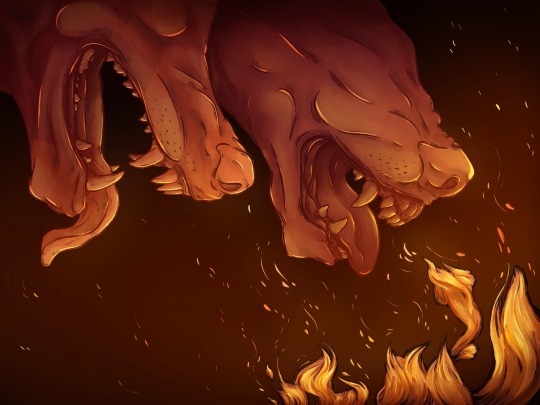
Brim's Bane
Under the full moon's gaze, the beast hunts its prey.
Winter has come to Lake Marryat and the forests on its shores. Samomsyl Holgata toils in a small printshop under the watchful eye of a bitter old man and his burly assistant, yearning for the day he can run the printing press. Sam trudges through bleak mundanity—pining after the local stable girl, isolated from his estranged mother and uncle, not a friend in sight. Desperate for change, for courage, for anything, Sam waits to be given a chance to prove himself worthy of printing books.
When the parchment runs low, Sam is tasked with securing more from a nearby town—despite the warnings of an impending blizzard. Through forest and snow, he journeys into the darkness. The storm strikes, forcing the young apprentice to seek shelter.
With death creeping into the threshold he would make his grave, Sam shudders at the winter's embrace. Then it came. Growling, scratching, gnawing. In the blizzard's shadows, it's there—stalking, biting, gnashing. With infernal claw and fang, with blood-soaked fur, the ravenous wolf arrives.
—————
Brim's Bane is coming soon, date and cover reveal TBA. If you love werewolves and gothic horror, follow for more! And a giveaway is coming soon too!
—————
Other Projects (WIP)
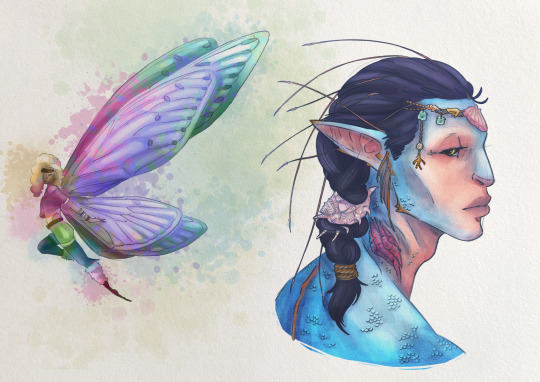
Other projects include:
Project Elfsong: a fantasy of gods and spirits, warfare and secrets, a young man's death leading to the rebirth of lost magic and a call from the heavens to greatness. Currently in early drafts and outlines with a large worldbuilding project around it.
Project SiSo: a sequel to Brim's Bane, already in the works, but venturing to new territories. Maybe less fur, and more decay? Currently in outlining.
Project Starry Sea: currently in the early stages as of writing this with simple worldbuilding and character designing. Have a loose idea for a plot but experimenting with approaching it and fleshing out details.
#brim's bane#writeblr#writing#bookblr#writeblr intro#creative writing#writer#writers on tumblr#follow 4 follow
2 notes
·
View notes
Text
"For many boys growing up in England in the eighteenth century the Royal Navy was immensely glamorous, the object of intense fascination. Naval heroes such as Drake, Hawke, Anson and Rodney were widely celebrated in popular songs, cheap broadsheets, chapbooks, memorabilia and even pub signs. There was almost universal agreement that the navy was Britain’s own particular strength, and that unlike the army, the navy defended the country and promoted trade without threatening traditional English liberties. Even in peacetime there were naval exploits to capture the imagination, such as Captain Cook’s voyages of exploration, which made him a celebrity not only throughout Britain, but across all Europe.
Boys were captivated by stories – fictional, semi-fictional and true – of life and adventure on the high seas, most notably by Robinson Crusoe, which found a wide and appreciative audience throughout the eighteenth and nineteenth centuries. A career at sea, especially in the navy, appeared exciting, romantic and desirable; and there were numerous cases of young boys either running away to sea or demanding that their parents allow them to join the navy. Matthew Flinders and Lord Cochrane both overcame their father’s opposition and joined the navy; while Francis Austen, William Light and Frederick Marryat successfully urged their parents or guardians to allow them to follow their inclination.
Of course, not all boys joining the navy did so with eager enthusiasm, but of all the careers open to young gentlemen, this was clearly the most popular with the boys themselves, at least until Wellington’s victories in the Peninsula allowed the army to claim a share of the limelight. Many parents favoured the navy as a career for their younger sons on more pragmatic grounds. It was traditional, patriotic and thoroughly respectable; it took boys when they were young – usually 13 or 14; and it was cheap, with no need to pay school fees or to purchase a commission, as in the army.
The parents or friends of a young gentleman sent to sea would still normally give him an allowance, usually between £30 and £50 a year, although some young midshipmen were forced to live on nothing other than their pay and rations. This allowance might be a considerable drain on the resources of a poor clergyman or half-pay army officer with a large family, but it was still one of the most affordable ways of establishing a boy in a suitable career. It was also a particularly tempting solution for the parents of a wild or troublesome youth, who might hope that his high spirits and abundant energy could find a useful outlet aboard a man-of-war.
Recent research by Evan Wilson has shown that only about one fifth of all naval officers came from the landed gentry and nobility; a second fifth had fathers who were themselves in the navy; and most of the remainder came either from the professions or from the world of commerce, although this last category ranged from small shopkeepers to wealthy merchants. As expected, very few came from humble backgrounds outside the navy and most of these remained stuck in the lowest ranks or were only given a commission at the very end of their career.
In other words, naval officers were drawn from the same classes of society as clergymen and lawyers, although they had a rather higher proportion of fathers engaged in commerce than the clergy. Naval officers were also much less cosmopolitan than their crew: most came from England and especially southern England, with the southwest (Devon and Cornwall), Kent, Hampshire and London all being overrepresented, reflecting the location of the principal naval bases and the tradition of seafaring in these parts of the country.
The most common way for a boy of good family to join the navy was as a ‘servant’ to the captain or, less frequently, to one of the other officers on board. Every captain was entitled to have four such servants for every hundred members of his crew – and a ship of the line might have a crew of seven or eight hundred. Some of these would actually be servants, older men with no expectation of promotion, but more than half were embryo officers who would remain under the captain’s authority for at least six years.
The official designation of these boys varied often with bewildering rapidity: any one might be a ‘servant’, a ‘volunteer’, a ‘midshipman’, a ‘master’s mate’, or an ‘able seaman’, without this greatly affecting his role or life on board, although collectively they are best described as midshipmen. The captain was responsible for supervising their education and welfare and would, ideally at least, see that they gained a thorough knowledge of seamanship and navigation.
He would also – again ideally – provide an example of how to manage the crew, maintaining authority with little resort to harsh discipline, and ensure that his midshipmen acquired the manners and general knowledge that befitted their future position as officers and gentlemen. The appointment of such boys was entirely at the discretion of the captain, and captains prized the privilege highly. Young relatives had an obvious claim on such patronage, and so did the protégés of patrons, senior officers and other men of influence.
The connection could be quite tenuous: the young Matthew Flinders was introduced to Captain Thomas Pasley by his cousin Henrietta, who was governess to Pasley’s children; while William Light found a place under Captain Charles Cunningham thanks to the recommendation of his guardian’s son, who was the vicar of Hoxne in Suffolk, near Cunningham’s home. Unlike most forms of apprenticeship captains did not charge the parents of boys a premium for taking their sons off their hands, although it is said that there were cases in which inconvenient tradesmen’s bills, especially in dockyard towns, disappeared at the same time that the son or nephew of the tradesman was taken on board.
A few boys entered the service through the Naval Academy at Portsmouth, which had been established in 1729 with the intention of providing better educated, more rounded, officers. The Academy had not been a great success – captains feared that it would encroach upon their patronage, and there were rumours of idleness, bullying and debauchery, although modern scholars have come to view these reports with considerable scepticism. Francis Austen joined the Academy in 1786 when he was just short of 12 years old, a small boy, full of energy, courage and liveliness, but also intelligent and with a warm heart.
He was one of a dozen new pupils that year, although when his brother Charles followed in 1791, there were only three others in his class. Mr Austen paid £50 a year for each of his sons to attend the Academy, and it proved a useful way for a gentleman with no personal connections in the navy to get his sons into the service. Francis in particular thrived at the Academy, and won high praise for his aptitude, character and behaviour, so impressing Sir Henry Martin, its governor, that he became Francis’s first patron.
One great advantage of the Academy was that it softened the blow of parting for both parents and child: sending a son there was no worse than sending him to any other school, while if he went straight to sea it might be many months or even years before the parents would see him again – a time of real perils and immense change which the parents could only dimly imagine. Leaving home to go to sea the young boy would enter a completely foreign world. If he had not grown up near a port he might be unfamiliar with the sight of a warship.
One officer wrote: never shall I forget the overwhelming and indefinable impression made on my mind upon reaching this wonderful and stupendous floating structure. The immensity of hull, height of the masts, and largeness of the sails, which had been loosened to dry, so far exceeded every anticipation I had formed, that I continued, unmindful of what was going on in the boat to gaze on her in dumb amazement, until awakened from my stupor by the coxswain, who now gruffly exclaimed, ‘Come, master! come! mount a’reevo, ’less you mean to be boat-keeper’. Life on board lacked the restraint and decorum of a parsonage schoolroom or family parlour, and a new recruit was often disconcerted by his shipmates who were seldom interested in putting him at his ease.
James Anthony Gardner recalled that I was shown down to the starboard wing berth. I had not been long seated before a rugged-muzzled midshipman came in, and having eyed me for a short time, he sang out with a voice of thunder: ‘Blister my tripes – where the hell did you come from? I suppose you want to stick your grinders (for it was near dinner-time) into some of our à la mode beef ’; and without waiting for a reply, he sat down . . . While another young man recalled that at first he did not know if this new world was inhabited by devils or spirits, ‘All seemed strange; different language and strange expressions of tongue, that I thought myself always asleep or in a dream, and never properly awake’.”
- Rory Muir, “The Navy: Young Gentlemen at Sea.” in Gentlemen of Uncertain Fortune: How Younger Sons Made Their Way in Jane Austen's England
10 notes
·
View notes
Text
Tagged (again!) by @goldandnavy!
Favorite Colour: Crimson Red (I generally like extremely saturated colours with high contrasts)
Currently Reading: The King's Own by Captain Frederick Marryat and a friend's speculative fiction manuscript they're hoping to publish
Last Series: Spy X Family with the boyfriend
Last Movie: I... don't really watch movies that much uhhh the second Sharpe episode or the last Hornblower movie?
Currently Working On: writing my urban fantasy story (65k words! i will probably show anyone who asks because I crave attention but also it is very first drafty and unfinished), running the Shipshape game, I should really uh do work on my capstone project but I'm salty and distracted, generating neural network artistic images
Tagging @screechfoxes, @chiropteracupola, @lunarsands, @highseasgirlbossing, @rhaill, @isolarrwilde, @geoantennae, @clove-pinks (you got tagged already though!) and whoever else would like to do this~
5 notes
·
View notes
Text
Masterman Ready
“Masterman Ready, or the Wreck of the Pacific” by Capt. Frederick Marryat, follows the adventures of a devoutly Christian family (The Seagraves) and their servant (Juno) who are shipwrecked at sea and find themselves having to survive on a desert island.
The crew has abandoned them apart from an old sailor, Masterman Ready who is also a Christian and who initially assists them in finding the…
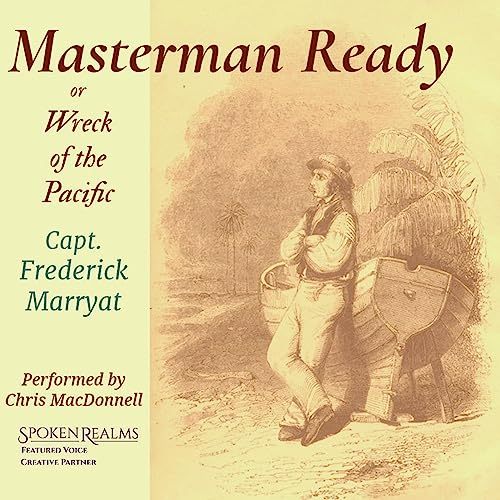
View On WordPress
0 notes
Text
🧛🏻♀️ 𝖁𝖆𝖒𝖕𝖎𝖗𝖊 𝕸𝖊𝖉𝖎𝖆 𝕸𝖆𝖘𝖙𝖊𝖗𝖑𝖎𝖘𝖙 🧛🏻♀️
🎟 Movies 🎟
Afflicted (2014)
Bakjwi (2009)
Beverly Hills Vamp (1988)
Blade (1988)
Blade II (2002)
Bordello of Blood (1996)
Bram Stoker’s Dracula (1992)
Byzantium (2012)
Captain Kronos – Vampire Hunter (1974)
Carmilla (2019)
Cirque du Freak: The Vampire's Assistant (2009)
Countess Dracula (1971)
Cronos (1993)
Crypt of the Vampire (1964)
Dark Shadows (2012)
Daughters of Darkness (1971)
Dracula (1958)
Dracula (1979)
Dracula 2000 (2000)
Dracula Has Risen From the Grave (1969)
Fright Night (1985)
Fright Night (2011)
From Dusk ‘Til Dawn (1996)
Grave of the Vampire (1972)
Hotel Translvania 1, 2 & 3 (2012, 2015 & 2018
Incense for the Damned (1971)
Interview With the Vampire (1994)
Isle of the Dead (1945)
La Noche de Walpurgis (1971)
Le Frisson des Vampires (1971)
Lesbian Vampire Killers (2009)
Les Deux Orphelines Vampires (1997)
Let the Right One In (2008)
Lèvres de Sang (1975)
Love Bites (1993)
Lust for a Vampire (1971)
Near Dark (1987)
Nosferatu: Phantom der Nacht (1979)
Nosferatu (1922)
Only Lovers Left Alive (2013)
Requiem pour un Vampire (1971)
Stake Land (2011)
Suck (2009)
The Brides of Dracula (1960)
The Hunger (1983)
The Kiss of the Vampire (1963)
The Lost Boys (1987)
The Night Stalker (1972)
The Twilight Saga (2008 - 2012)
The Vampire Lovers (1970)
Thirst (2009)
Vamp (1986)
Vampire's Kiss (1988)
Vampire (1979)
Vampire Academy (2014)
Vampire Circus (1972)
Vampire in Brooklyn (1995)
Vampires: Los Muertos (2002)
Vampires (1988)
Vampires Suck (2010)
Vampyr (1932)
Vampyros Lesbos (1971)
What We Do In the Shadows (2014)
Yakuza Apocalypse (2015)
📖 Books (Stand Alone) 📖
'Salem's Lot by Stephen King
After Ninety Years by Milovan Glišić
Beren and Lúthien by J.R.R Tolkien
Bewitched by Edith Wharton.
Blood Oath by Christopher Farnsworth
Captive by Gabrielle Estres.
Carmilla by Sheridan Le Fanu.
Carpe Jugulum by Terry Pratchett
Children of the Night by Robert E. Howard
Dracula by Bram Stoker
Dracula in Love by Karen Essex
Empire V by Victor Pelevin
Fangland by John Marks
Fevre Dream by George R. R. Martin
Fledgling by Octavia Butler
For the Blood is the Life by F. Marion Crawford
Fragment of a Novel by Lord Byron
Hematoma by Matteo Polk
I Am Legend by Richard Matheson
Interview with the Vampire by Anne Rice
Knight of the Black Rose by James Lowder
Lady Christina by Mircea Eliade
La Femme Immortelle (The Immortal Woman) by Pierre Alexis de Ponson du Terrail
La Jeune Vampire by J.-H. Rosny Aîné
La Morte Amoureuse by Théophile Gautier
La Vampire (The Vampire Countess) by Paul Féval
La Ville Vampire (Vampire City) by Paul Féval
Le Chevalier Ténèbre (Knightshade) by Paul Féval
Let the Right One In by John Ajvide Lindqvist
Lilith by George MacDonald
Lost Souls by Poppy Z. Brite
Manor by Karl Heinrich Ulrichs
Modern Marvels – Viktoriana by Wayne Reinagel
NOS4A2 by Joe Hill
Oil and Water by Lara Ann Dominick
Origin of the Vampyre, by P. J. Parker
Pages from a Young Girl's Journal by Robert Aickman
Popsy by Stephen King
Renfield: Slave of Dracula by Barbara Hambly
Revelations in Black by Carl Jacobi
Romeo and Juliet and Vampires by Claudia Gabel
Song of The Nephilim, by D. Finica.
Stray Witch by Eva Alton
Sunshine by Robin McKinley
The Blood of the Vampire by Florence Marryat
The Bloody Chamber and Other Stories by Angela Carter
The Bride of Corinth by Robert Southey
The Dark Castle by Marion Brandon
The Dark Tower V: Wolves of the Calla by Stephen King
The Dark Tower VII: The Dark Tower by Stephen King
The Delicate Dependency: A Novel of the Vampire Life by Michael Talbot
The Dragon Waiting by John M. Ford
The Family of the Vourdalak by Count Alexis Tolstoy
The Fate of Madame Cabanel by Eliza Lynn Linton
The Girl with the Hungry Eyes by Fritz Leiber
The Hills of the Dead by Robert E. Howard
The Historian by Elizabeth Kostova
The House of the Vampire by George Sylvester Viereck
The Hunger by Whitley Strieber
The Journal of Edwin Underhill by Peter Tonkin
The Keep by F. Paul Wilson
The Lair of the White Worm by Bram Stoker
The Light at the End by John Skipp and Craig Spector
The Little Sisters of Eluria by Stephen King
The Longest Night by Ray Russell
The Night Flier by Stephen King
The Night Stalker by Jeff Rice
The Pale Lady by Alexandre Dumas
The Room in the Tower by E.F. Benson.
The Silmarillion by J.R.R. Tolkien
The Silver Kiss by Annette Curtis Klause
The Silver Kiss by by Annette Curtis Klause
The Stress of Her Regard by Tim Powers
The Tomb of Sarah by F. G. Loring
The True Story of the Vampire by Count Stanislaus Eric Stenbock
The Vampire by Jan Neruda
The Vampyr by John William Polidori
The Vampyre of Gotham by Lev Raphael
They Thirst by Robert McCammon
Those Who Hunt the Night/Immortal Blood by Barbara Hambly
Travelling with the Dead by Barbara Hambly
Vampire's Moon by Peter Saxon
Vampire$ by John Steakley
Vampire by Vladimir Dal
Vampire of the Mists by Christie Golden
Vampireology by Nicky Raven & Dugald Steer
Vampires Overhead by Alan Hyder
Varney the Vampire by James Malcolm Rymer
Vlad, the last confession by Chris Humphreys.
Wampir ("The Vampire") by Władysław Reymont.
With the People from the Bridge by Dimitris Lyacos
📚 Books (Series) 📚
Anno Dracula Series by Kim Newman (Book 1: Anno Dracula)
Blood Books by Tanya Huff (Book 1: Blood Price)
Dark-Hunter by Sherrilyn Kenyon (Book 1: Dark Hunters)
Eternal Night: A Vampire Romance Collection by K. L. Bone (Book 1: Forever Chosen)
Hollows Series by Kim Harrison (Book 1: Dead Witch Walking)
House of Night by P. C. Cast (Book 1: Marked)
Scarlet Cherie: Vampire Series by Ayshen Irfan (Book 1: The Fire Within My Heart)
The Anita Blake: Vampire Hunter Series by Laurell K. Hamilton (Book 1: Guilty Pleasures)
The Dresden Files by Jim Butcher (Book 1: Storm Front)
The Mortal Instruments by Cassandra Claire (Book 1: City of Bones)
The Paranormal Detective Series by Lily Luchesi (Book 1: Stake-Out)
The Saga of Darren Shan by Darren Shan (Book 1: Cirque Du Freak)
The Southern Vampire Mysteries by Charlane Harris (Book 1: Dead Until Dark)
The Twilight Saga by Stephanie Meyer (Book 1: Twilight)
The Vampire Academy by Richelle Mead (Book 1: Vampire Academy)
The Vampire Chronicles by Anne Rice (Book 1: Interview With the Vampire)
The Vampire Diaries by L. J. Smith (Book 1: The Awakening)
Undead by Maryjanice Davidison (Book 1: Undead and Unwed)
Vampire Earth by E. E Knight (Book 1: Way of the Wolf)
🎬 TV Shows 🎬
Angel
Becoming Human
Being Human
Blade: The Series
Blood Ties
Buffy the Vampire Slayer
Dark Shadows
Dracula
Forever Knight
From Dusk ‘Til Dawn: The Series
Hemlock Grove
Imortal
La Luna Sangre
Lobo
Mona the Vampire
Moonlight
Penny Dreadful
Salems’ Lot
The Originals
The Vampire Detective
The Vampire Diaries
The Vampyr: A Soap Opera
True Blood
What We Do In The Shadows
Young Dracula
#vampire#vampires#vampyr#goth#gothic#vampire girl#vampirecore#vampire goth#vampire aesthetic#vampirism#vampire boyfriend#vampire books#vampire bite#vampire fiction#vampire film#vampire fantasy#twilight#interview with the vampire#the vampire diaries#tvd#anita blake#vampire community#vampire coven#vampire culture#vampire comic#vampire chronicles#vampire characters#vampire diaries#media#master list
5K notes
·
View notes
Text
Holy stoning the Deck
“They [the sailors] then come on deck again, pull off their shoes and stockings, turn up their trowsers to above their knees, and commence holy-stoning the deck...Here the men suffer from being obliged to kneel down on the wetted deck, and a gravelly sort of sand strewn over it. To perform this work they kneel with their bare knees, rubbing the deck with a stone and the sand, the grit of which is often very injurious.”- Seaman William Robinson, 19th century

'Lieutenant Blockhead keeping the Morning Watch', sailors scrubbing down the decks; study for an illustration to 'The Life of a Midshipman' from an album of twelve drawings on eleven sheets by Captain Frederick Marryat, 1820 (x)
The wooden decks were scrubbed with sandstone (so-called holystones) together with a scrubbing mixture of sand and water. But where did the name Holystone come from ? There are several variants that try to give the name an origin.
The first says that it comes from the fact that many sailors borrowed a piece of a gravestone from St Nicholas Church in Great Yarmouth, England, to scrub the deck with. The second is that the deck was only scrubbed on Sundays.

Holy stoning the deck of USS Constitution, by Stephen Biesty (c) USS Constitution Museum
The third would come from the blocks themselves. Smaller stones were called prayer books (used to scrub tighter, hard-to-reach places), larger ones were called hand bibles and were the size of a big family bible.

This photograph shows five sailors kneeling with holystones, surrounded by 14 other sailors, all obviously posing for the camera. According to the handwritten text on the album sheet to which the photograph is affixed this is "HM.S. Pandora. Holy stoning the deck". before 1913 by Smalljim
The last and most likely variant is that the stones were called holystones because the men with the stones in their hands looked like they were praying on their knees like they do it in church.
202 notes
·
View notes
Note
names for meme: John, Samuel, Frederick
Thank you for the ask!
I have a suspicion John and Samuel are referring to my historical interests, John Graves Simcoe and Samuel Graves, and Frederick refers to a certain naval captain...
John:
3/10. It's an utterly impractical name. You could basically make a verse of Old MacDonald Had a Farm going "here a John, there a John, everywhere just Johns" (...particularly in 18th century England). Every Tom, Dick and Harry has a son named John. On little John's first day at school, he will be greeted by a dozen classmates whose name is also John. Good thing some of the kids might be convinced to go by their middle name to make things a little bit easier for the teacher. What, you say? Your middle name is Graves? I think we'll stick to John...
Samuel:
A solid 8/10. A rock-solid no-nonsense name. No fancy frills whatsoever, very traditional, particularly in Jewish and Christian contexts on account of the prophet Samuel (the name itself being of Hebrew origin and translating to "name of God" or "God heard"), yet it isn't as epidemic in occurence as John. Personally, I only ever knew one Samuel in real life- and named my cat after a deceased bearer of that name. Since I associate it with a historical figure I find genuinely interesting, I am of course biased here.
Frederick:
6/10. ...Like Captain Marryat, eh? My immediate associations are wild and varied. Had you asked me at the age of four or five, this would have been the first Frederick to come to mind:

(the bigger one in front is Frederick. Image)
If you ask my present self, the first Frederick to come to mind is a gay flautist with an abusive father and a knack for composing (and bringing a hitherto unremarkable country to the table of the strongest European powers of its day).
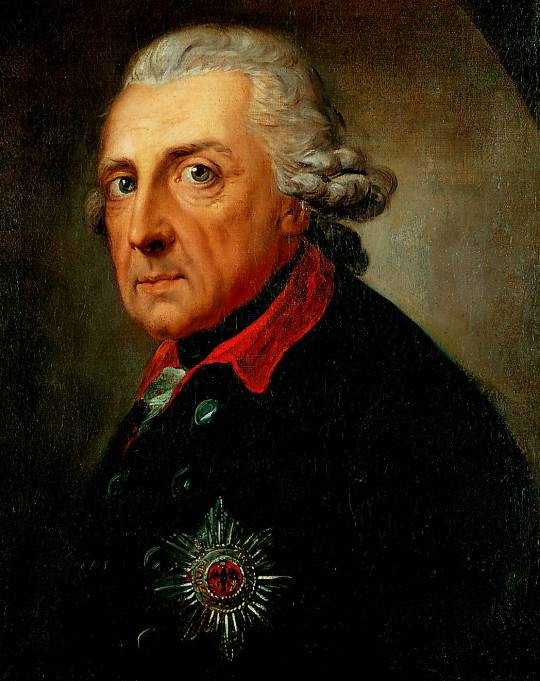
Friedrich der Große- Frederick the Great
The thing is, Friedrich is a fairly antiquated name that's a bit too closely associated with the House of Hohenzollern for my taste, so Frederick gets a few points deducted from the overall score on account of his German cousins.
Frederick the Great though? I have a story related to him. ...Remember how Frederick was saved from a shot at the Battle of Kunersdorf by his snuff box? I had a similar experience, in Frederick's elected hometown no less. A bus I was travelling on had to break really sharp on account of a cyclist crossing the road on a red light. I was standing in the back of the bus and was hurled into a pane of safety glass, cracking it completely. As good luck would have it, I was carrying a large, bulky handbag with quite a couple of things in it that day, which sort of cushioned the impact somewhat and ensuring I, to the amazement of everyone, including medical personnel, escaped virtually unscathed. I don't think they'll ever display my handbag in a museum, though.
And last but not least, Captain Marryat, who is increasinlgy taking over the name Frederick in my mind: a bonus point for him, as I consider his novels (and your excellent posts about them, the Captain and his family) to be intriguing windows into early Victorian Britain.
#ask game#reply#clove pinks#samuel graves#john graves smcoe#frederick marryat#frederick the great#piggeldy und frederick
5 notes
·
View notes
Text
YE SKIPPÈRE

With artistic credit to Frank Marryat, one of the Captain's sons: an utterly ridiculous 1840s portrait of Frederick Marryat at home in Langham, Norfolk where he spent his last years.
This isn't the first time I've shared Frank Marryat's art, he also drew "A Happy Family." Both pictures are reproduced in Tom Pocock's book Captain Marryat: Seaman, Writer, and Adventurer—but only in the print version, not the ebook—and are printed in greyscale, although they may have originally been in colour. The source is given as the National Maritime Museum, Greenwich, but I can't find any references on the NMM website.
In the spirit of Eighteen-Forties Friday, Frank's artwork of his father demonstrates that 1840s pop culture was not only fascinated with medieval aesthetics: they could also spoof it in Ye Olde Memes. Marryat holds "ye snuffe" tobacco in one hand, and "ye Peter Simple" and "ye Jacob Faithful" represented as scrolls in his pocket are "ye wittie sayings." He has ye mansion (Langham Manor Cottage, no longer standing), ye croppes, and ye Dumple—his slightly notorious pet horse, Dumpling.
And there is literally a snail. (You can't have medieval marginalia without one!) The bottle of "ye soda" on the ground was unexpected, but soda fountains in pharmacies existed at the time, and sweetened carbonated beverages as well as mineral waters were commercially produced and sold in the early 19th century.
#frederick marryat#captain marryat#1840s#Eighteen-Forties Friday#frank marryat#marryat family#victorian#medieval memes#early victorian era#biography#tom pocock#captain marryat: seaman writer and adventurer#frank drew another pseudo-medieval pic of one of marryat's friends in langham#rip frank marryat you would have loved the internet
22 notes
·
View notes
Text
I wish I could remember what nonfiction book it was, where young(er) Frederick Marryat makes a cameo appearance. It could have been about naval signal codes, battling smugglers in the 1810s-1820s, or his awful family idk.
But the primary source meets an obnoxiously young but still Captain Frederick Marryat, in a time of high unemployment among naval officers after the Napoleonic Wars. And he is basically like, "Nyah nyah my rich dad got me a boat." >:) which tbh sounds exactly like what I would expect for young Captain Marryat.
#frederick marryat#captain marryat#i swear this is real#i may be exaggerating marryat's obnoxiousness in my memory#but that DOES sound in character for him#he was still obnoxious in middle age albeit more reflective about war crimes etc.#shaun talks#age of sail
14 notes
·
View notes
Text
Welcome to the wild woods...
Below are trail markers you can use to navigate the wilderness. Happy trails.

About
I go by Kano Barlowe
I enjoy writing high fantasy
Visit my website and subscribe to my newsletter here.

WIPs



A young elf is born to a family with high expectations of his magical abilities, only to discover that he is magically deficient. Searching for himself and his purpose, he discovers arcane magic and gods who have long abandoned their people - and a secret war waging for centuries long.
Tuilinn, more commonly known as Linn, is son of the renowned Selma. His grandfather for whom he's named founded the family's greatest achievement: electric power. The industrialization and efficiency that electricity magic brought to society propelled Linn's family foward, but at a price: high expectations and impossible standards passed from generation to generation.
With Linn diagnosed as "deficient" in electricity magic as a child, he found himself cast aside by his mother in favor of his beloved twin sister, Ellerie. Finding his place with his friend Dismas, Linn chooses to cause trouble and mischief whenever he can, if only to defy his family's oppressive standards.
After a particularly disruptive robbery that led to Linn's arrest, he manages to get out of charges and decides to go find himself and decide his purpose. He travels to Ya forest, the land of the ancient elves where the nature itself seems to call to him.
On a particular venture in the forest, he finds himself surrounded by wolves. Attacked, mauled, torn apart, Linn prepares himself for the end. And then...
Light. A god's gentle smile.
And magic so vast he cannot comprehend.
Tags
Psalms from the Mountaintop, Linn, Shandril, Ellerie, Tharak, Dismas, Olorrak, Selma

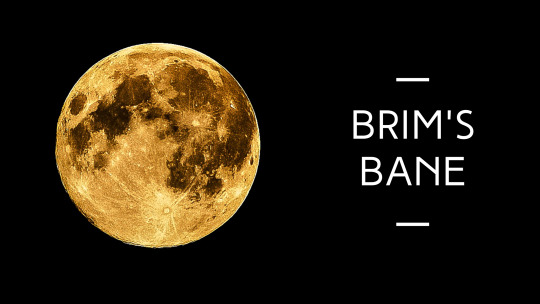
When a printer's apprentice is caught in a blizzard, he finds shelter in the remains of an abandoned village - where only monsters remain.
Winter has come to the Marryat, the lake and the region surrounding it. Samomsyl, a shut-in and recluse, spends all of his time at home or learning how to use the printing press as an apprentice to a bitter old man and his assistant.
Despite the warnings of an impending blizzard, Sam is sent to fetch paper in a neighboring village. Journeying through the forest as the winter storm strikes, Sam finds shelter in the ruins of an old village called Blackwood - a village he'd never heard of.
Cold and alone, Sam quickly loses hope of surviving the storm even in the shelter of a destroyed home.
Growling. Scratching. Gnawing. Biting.
The beast arrives.
Tags
Brim's Bane, Samomsyl, Leona, werewolf WIP
#writeblr#writers on tumblr#writer intro#writing community#writing WIP#authors#author about me#about me#Psalms from the Mountaintop#Brim's Bane#pinned post
31 notes
·
View notes
Photo
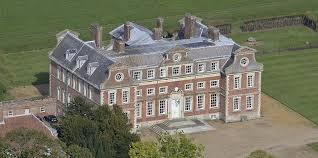
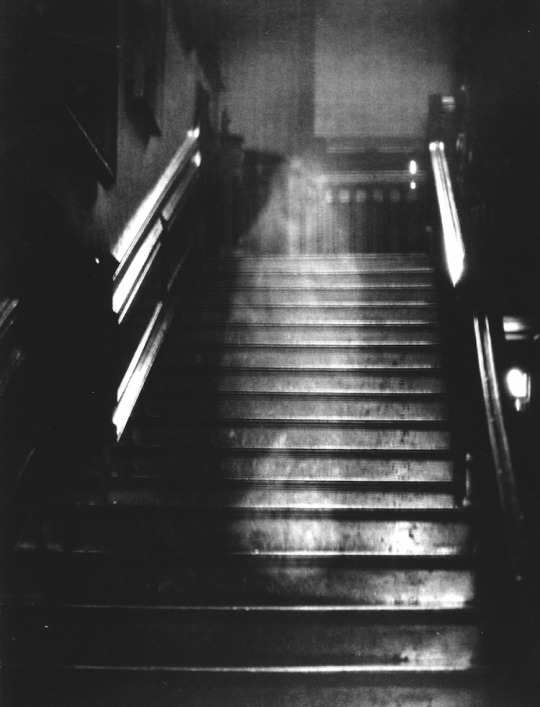
Raynham Hall
Raynham Hall is a country house in Norfolk, England. For over 300 years it has been the seat of the Townshend family. The hall gave its name to the area, known as The Raynhams, and is home to one of the most famous ghosts of all time, The Brown Lady Ghost. The Ghost Picture snapped at Raynham Hall has remained to some, as one of the most important ghost pictures in existence.
The Brown Lady of Raynham is the ghost of Lady Dorothy Townshend who was married to Charles Townshend during the early 1700′s. Townshend began to suspect Dorothy of being unfaithful to him. When Townshend discovered his wife’s less than faithful habits, he imprisoned her in the family estate at Raynham Hall. It is said that he never allowed her to leave, even to see her own children. She remained there until her death many years later. Historical records show that Lady Townshend had died and was buried in 1726, but many believed the funeral to be a hoax, in order for Townshend to cover up the cruel punishment for his wife.
Dorothy’s ghost is said to haunt the oak staircase and other areas of Raynham Hall. She has been witnessed by many people, including King George IV, who claimed to see the apparition standing at his bedside, while staying at Raynham Hall. The Brown Lady Ghost has even been shot at by Captain Frederick Marryat who claimed to see her floating by himself and his men. He claimed to see the Ghost of Lady Townshend “grin diabolically” at his men, before he unloaded.
14 notes
·
View notes
Note
Could you recommend me some good novels about England under the Stuarts? Which ones are in your opinion the best to read and why? Thanks Empress :)
There are A LOT that I’ve enjoyed but I think I’ll list my favourites so the list isn’t incredibly long. I’d suggest all these novels:
The Darling Strumpet by Gillian Bagwell - This is about Nell Gwynn. It’s really gritty and vivid, Bagwell obviously did a lot of research into what Restoration England looked like, smelled like, sounded like and tasted like.
Forever Amber by Kathleen Windsor - Kind of a classic, really. It’s about Amber St. Clare (not based on an irl person) who works her way up the ranks of Restoration society through sex and marriage. She becomes an actress, too.
The Illumination of Ursula Flight by Anna Marie Crowhurst - Ursula Flight (not based on an irl person, though has an air of Aphra Behn about her), born at the cusp of England’s Restoration era in the late 17th century, wants to become a playwright and a libertine, but her genteel family have other ideas.
The Baroque Cycle by Neal Stephenson - It’s hard to describe this series because it’s an alternate history/science fiction series set in the Restoration and early 18th century Europe. Stephenson also didn’t publish it as trilogy, but rather, as volumes. I think my favourite volume is Quicksilver (which is the first volume).
The Children of the New Forest by Captain Marryat - This is a classic children’s book from the 19th century. It is set during the English Civil War. The children of the aristocratic Beverly family have their house destroyed by Roundheads and are orphaned so they find refuge with the forest keeper who tries to keep them safe from hostile Roundheads and raise them as foresters. They do meet some sympathetic Puritans so it’s not completely one sided, and they end up saving and befriending a Spanish Rromani boy named Pablo. They also help young Charles II escape to the continent near the end of the book.
The Countess and the King by Susan Holloway Scott - Scott has written several historical fictions set in this era (a book about Louise de Kerouaille, a book about Barbara Villiers, a book about Sarah Churchill etc.) but this is my favourite: it’s about the life of Catherine Sedley, daughter of the rake, Charles Sedley, who eventually went on to become the mistress of Charles II’s brother, the Duke of York (later James II). Catherine wasn’t considered beautiful but she was considered incredibly funny, which this book showcases, and I also think this book does a good job of showing the gradually deteriorating friendship between Catherine and the Duke of York’s young wife, Mary of Modena.
The Ashes of London by Andrew Taylor - This has been critically acclaimed recently: it’s a murder mystery/historical thriller that takes place just after the Great Fire of London has devastated the city. It is so vivid. There are actually a few murder mystery books set in Stuart London!
As Meat Loves Salt by Maria McCann - Two soldiers fall in love amongst the wreckage and devastation of the Civil War. Really beautiful but sad.
Lady on the Coin by Margaret Campbell Barnes - Not to be confused with 'The Girl on the Coin,’ this is the story of Frances Stewart, who famously and consistently refused to be Charles II’s mistress but did choose to elope with the Duke of Richmond and Lennox instead. Lennox is so sexy in this book….he’s very “troubled genius” and likes to drink a little too much.
The King’s Touch by Jude Morgan - the story of Charles II’s Restoration and reign told from the perspective of his illegitimate son, the Duke of Monmouth. LOVED this one.
Cavalier Queen by Fiona Mountain - Okay, so this is like......kind of inaccurate since it plays up a romance between Queen Henrietta Maria, Charles I’s queen consort, and Henry Jermyn, Earl of St Albans (which was rumoured to slander her but probably never happened). It is a very good novel about Henrietta Maria’s marriage to Charles I, her life during his reign and her experiences during the ECW and his eventual execution though. I really do like it, and....Jermyn is sexy, I Won’t Lie.
The Silent Companions by Laura Purcell - Whilst this book flits between both the mid 19th century and the early 17th century, I wanted to recommend it because it is so damn scary. Such a good gothic horror novel. A newly widowed London wife, used to bustling and glamorous living, has been left her husband’s family estate. Surprise surprise, it’s a dilapidated manor house with an eerie air. And worse still, it seems to be plagued by a collection of 17th century wooden painted figures that hold a dark and terrible secret.
I’m also going to check out Jean Plaidy’s Stuart (and Georgian) series soon. She’s written loads of books about various female figures from the Stuart era, including some stuff set in the reign of Queen Anne. I’ve heard she’s a brilliant writer.
63 notes
·
View notes
Text
Family Of Thomas Church (1798-1860) Singapore
I am looking for descendants of Thomas Church (1798-1860) to share some information.
Son of Thomas Church & Elizabeth Dixon.He married Elizabeth Scott Of Penang.
His issue:-
i) Harriet Georgina Church (1827-1898) married Walter Stuart Mann. Their issue:-
ai) Annie Florence Mann (1850-1941) married Thomas Vincent Fegan.
aii) Horace Butterworth Mann (1851-1909).
ii) Robert Church (1828-1904) married Sarah Church Waller.
iii) Thomas Ross Church (1830-1926) married Florence Marryat(1833-1899).Their issue:-
ai) Eva Florence Ross Church (1855-1887) married Alfred Stevens.
aii) Ethel Maude Church (1857-1952) married Edmund Nicholas Alpe and Ernest Walter Russell Barry.Their issue:-
bi) Ethel Mary Florence Alpe(1876-1958) married Edwin Chappell.
bii) Edmund Francis Ross Alpe (1879-1944).
aiii) Frederick Francis Marryat Church (1859-?) married Elizabeth H. Spiller.His issue:-
bi) Catherine Mary Church(1904-1979) married Reginald Sidney Crabb.
Their issue:-
ci) Paul Crabb (1926-?) married ?.
His issue:-
di) Colin Crabb.
cii) Reginald B Crabb (1927-1928).
bii) Patricia Marguerite Joan Church (1906-1990) married Frank Henry Bailey Fyfe.
Their issue:-
ci) Dorothy Marryat Fyfe married ? Stewart.
aiv) Florence Charlotte Henrietta Church (1860-?).
av) Voilet Theodora Church (1863-1953) married Stanley Locker Dobie.Their issue:-
bi) Marryat Ross Dobie (1888-1973) married Grace Vera Patmore.
His issue:-
ci) Alison Roxburgh Dobie married Anthony Allan Montgomery.
bii) Beatrice Shedden Dobie (1900-?) married Allan D. Macdonald.
Their issue:-
ci) Robert D Macdonald(1929-?).
avi) Sybil Catherine Florence Church (1866-1958) married 1stly,Gerald Edward Lyon Campbell & 2ndly, Wentworth Vernon Cole. Their issue:-
bi) Mary Hamilton Campbell (1888-?) married Alfred Thomas Duncan Anderson.
Their issue:-
ci) Ian Duncan Hamilton Anderson (1916-?)
cii) Alec Vernon Anderson(1921-?).
avii) George Marryat Ross Church (1868-1940) married Emily Whymper.His issue:-
bi) Robert Henry Ross Church(1904-1975) married Barbara Joyce Byers.
His issue:-
ci) Armorel Barbara Church married Fergus David Hanham.
ci) Marryat Ross Church(1936-1941).
cii) Martin Byers Church(1939-2008) married Diane C Perry.
His issue:-
di) Alexander Philip Ross Church.
dii) Daniel Thomas Ross Church married Olivia Stockdale
His issue:-
ei) Felix James Ross Church.
ciii) Valentine Ross Church(1941-2008) married Anne E Mouland.His issue:-
di) Marryat Frederick Ross Church.
dii)Benjamin Robert Ross Church married Jessica Groves.
bii) Barbara Theodora Church(1910-?) married Hugh Joseph Gray.
Their issue:-
ci) Brigid Penelope Gray married 1stly Anthony Bart Nesburn & 2ndly,Carl M Leventhal.
aviii) Marguerite Ross Church (1872-1951) married Harry Oliver Whymper.
iv) Hannah Church (1834-1852) married Samuel Gordon.
Their issue:-
ai) David Birdwood Gordon(1849-?)
aii) Elizabeth Catherine Gordon(1851-?) married William Charles Hilditch.
Their issue:-
bi) Edith Mary Ann Hilditch (1870-1871).
v) Charles Wright Church (1835-1890).
vi) Sarah Scott Church (1837-1909) married Captain Malcolm Kemp Bourne.Their issue:-
ai) Robert Kemp Bourne (1863).
aii) Mabel Frances Bourne (1866-1950).
aiii) Malcolm Stuart Bourne (1867-1940).
aiv) Percy Trevor Bourne (1867-1893).
vii) William Marryat Church (1841-1842).
viii) Edward Winter Church (1843-1875).
Please contact me at :- [email protected]
0 notes